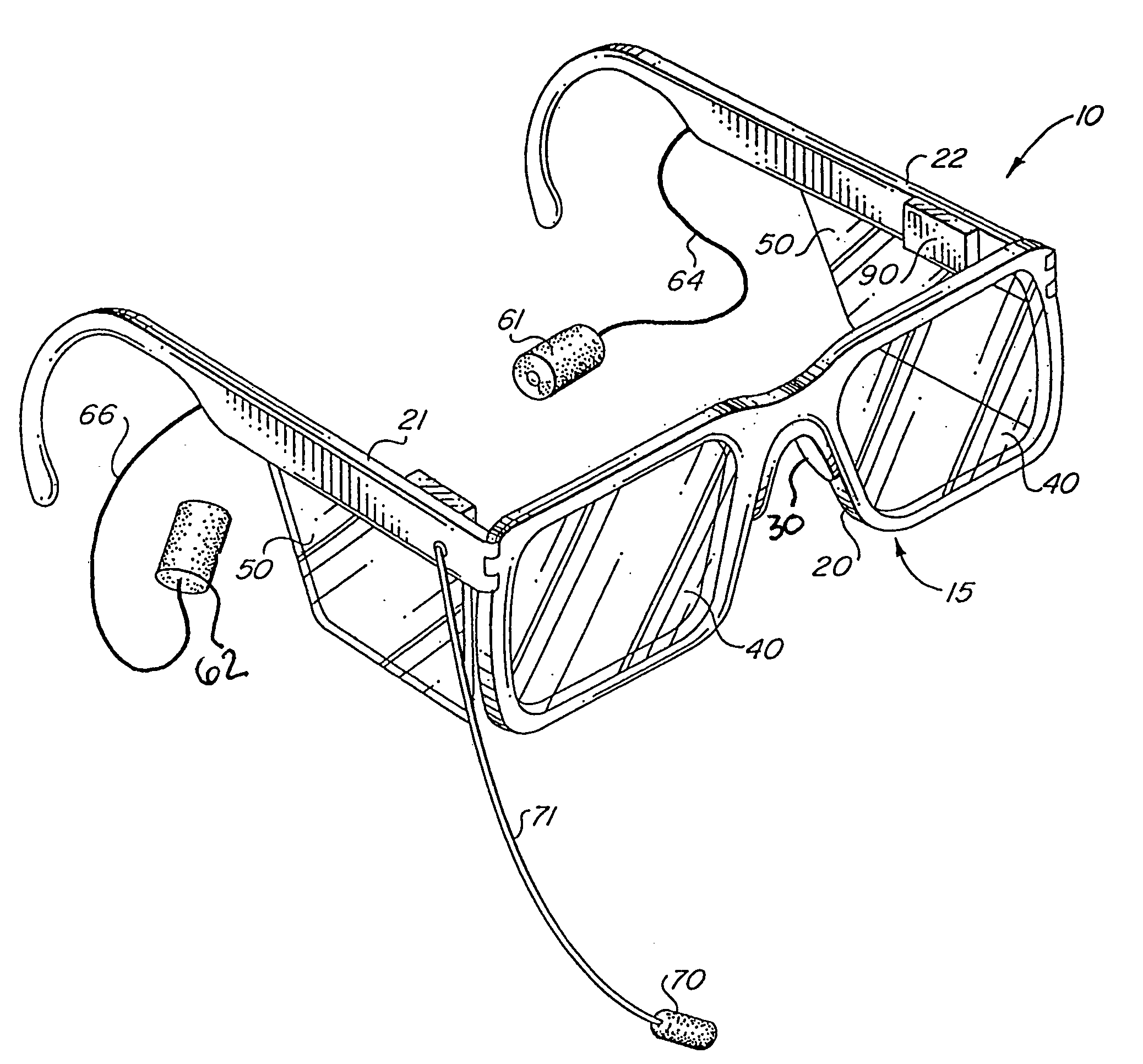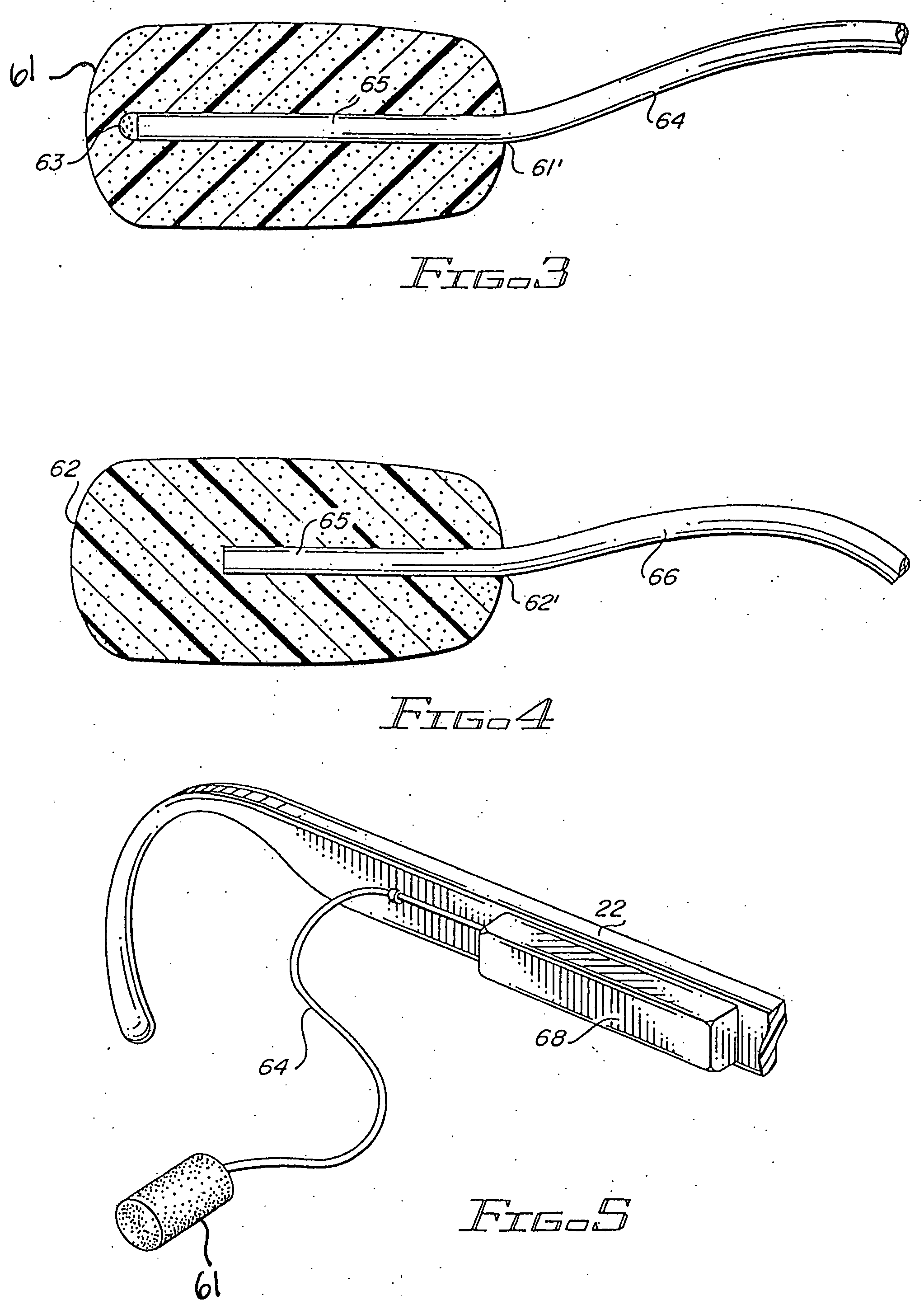Hearing protection and communication assembly
a technology for hearing protection and communication, applied in the direction of spectacles/goggles, goggles, instruments, etc., can solve the problems of unsanitary, unsanitary, and unsanitary wear of previously used external covers, and achieve the effects of reducing the number of people affected
- Summary
- Abstract
- Description
- Claims
- Application Information
AI Technical Summary
Benefits of technology
Problems solved by technology
Method used
Image
Examples
Embodiment Construction
[0036] Shown throughout the figures, the present invention is directed towards a hearing protection and communication assembly generally indicated as 10. The safety assembly 10 is structured primarily to be worn on a workers head in a substantially loud industrial type environment wherein particulate or corrosive fluids may inadvertently affect a worker's eyes and wherein communicability with workers is a vital safety and productivity concern, although it may be worn in a variety of other situations as well. The main types of safety equipment which are ergonomically combined into the single, easy to wear and use, self-contained safety assembly 10 relate to eye protection, hearing protection, and communicability, a comprehensive combination which solves a previously unaddressed, industry wide problem of workers not implementing all of the necessary safety equipment.
[0037] The safety assembly 10 includes a frame assembly 15 which is to be worn on the wearer's head. In particular, the...
PUM
 Login to View More
Login to View More Abstract
Description
Claims
Application Information
 Login to View More
Login to View More - R&D
- Intellectual Property
- Life Sciences
- Materials
- Tech Scout
- Unparalleled Data Quality
- Higher Quality Content
- 60% Fewer Hallucinations
Browse by: Latest US Patents, China's latest patents, Technical Efficacy Thesaurus, Application Domain, Technology Topic, Popular Technical Reports.
© 2025 PatSnap. All rights reserved.Legal|Privacy policy|Modern Slavery Act Transparency Statement|Sitemap|About US| Contact US: help@patsnap.com



